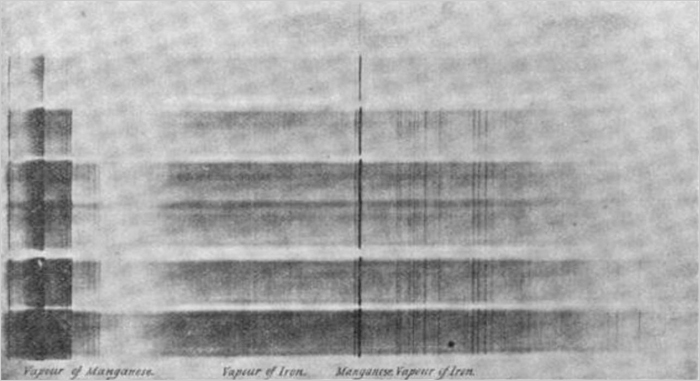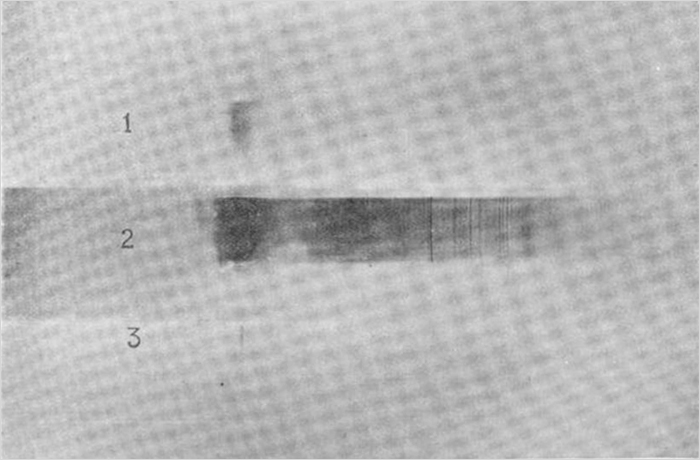First, what is the nature of the flame?

Fig. 15
Seven Spectra taken at intervals of two minutes during the course of a “blow.”
In the first or slag period, the lines of manganese are alone visible. In the second, the lines and some bands of manganese and the yellow line of sodium are visible. After the second period, the change in the spectra, caused by rise of temperature is readily seen, the lines of iron and the bands of manganese become more numerous.

Fig. 16
Spectrum during (1) the Slag Period; (2) the “Boil;” (3) the Blaze of Spiegeleisen.
*
(squared, resized to same widths; borders replaced)
illustrating Noel Hartley. “The Thermo-Chemistry of the Bessemer Process.” (Cantor Lectures), Lecture III.—Delivered March 28, 1898.
Journal of the Society of the Arts 46 (July 22, 1898) : 733-744
University of Virginia copy, digitized May 21, 2009
—
“Spectra however differ not only with the metal blown in different works, but even with the same metal during different blows, according to the composition in the first case, and to the temperature in the second. But besides these variations there are certain broad facts which call for explanation. First, what is the nature of the flame?”
p 740
tags:
the boil; the blow; the Blaze of Spiegeleisen; interference; spectra; steel; yellow
W. J. Russell